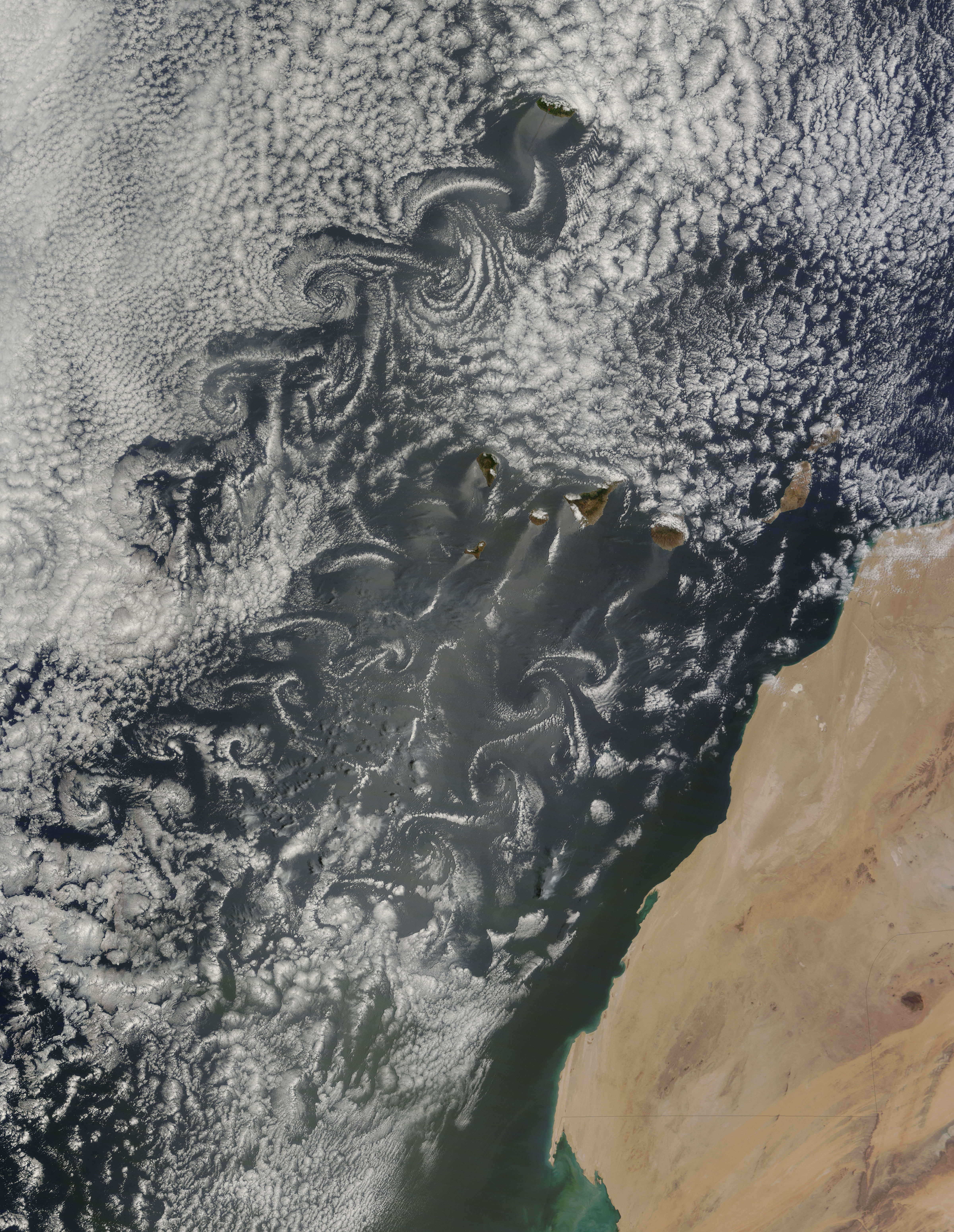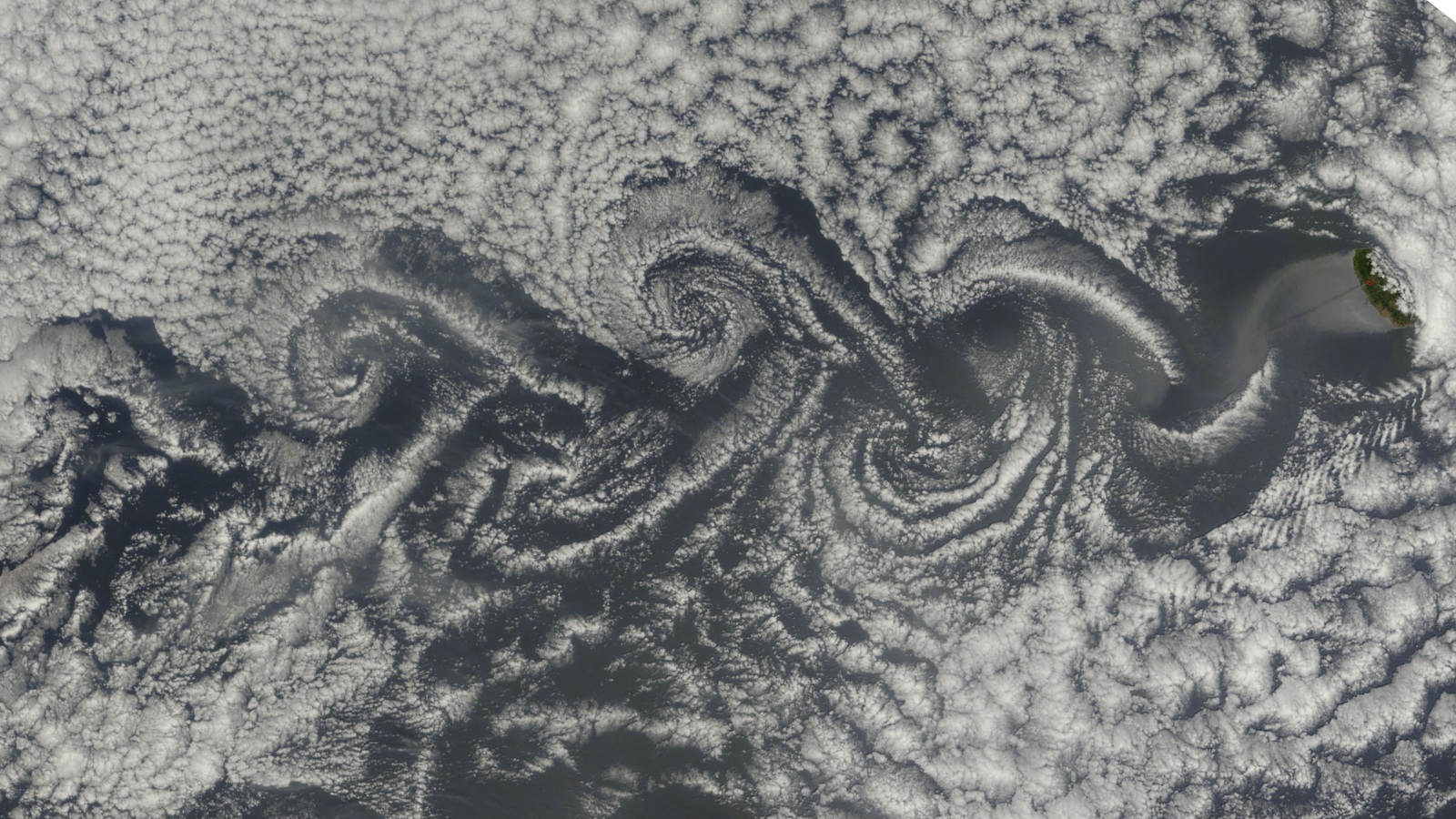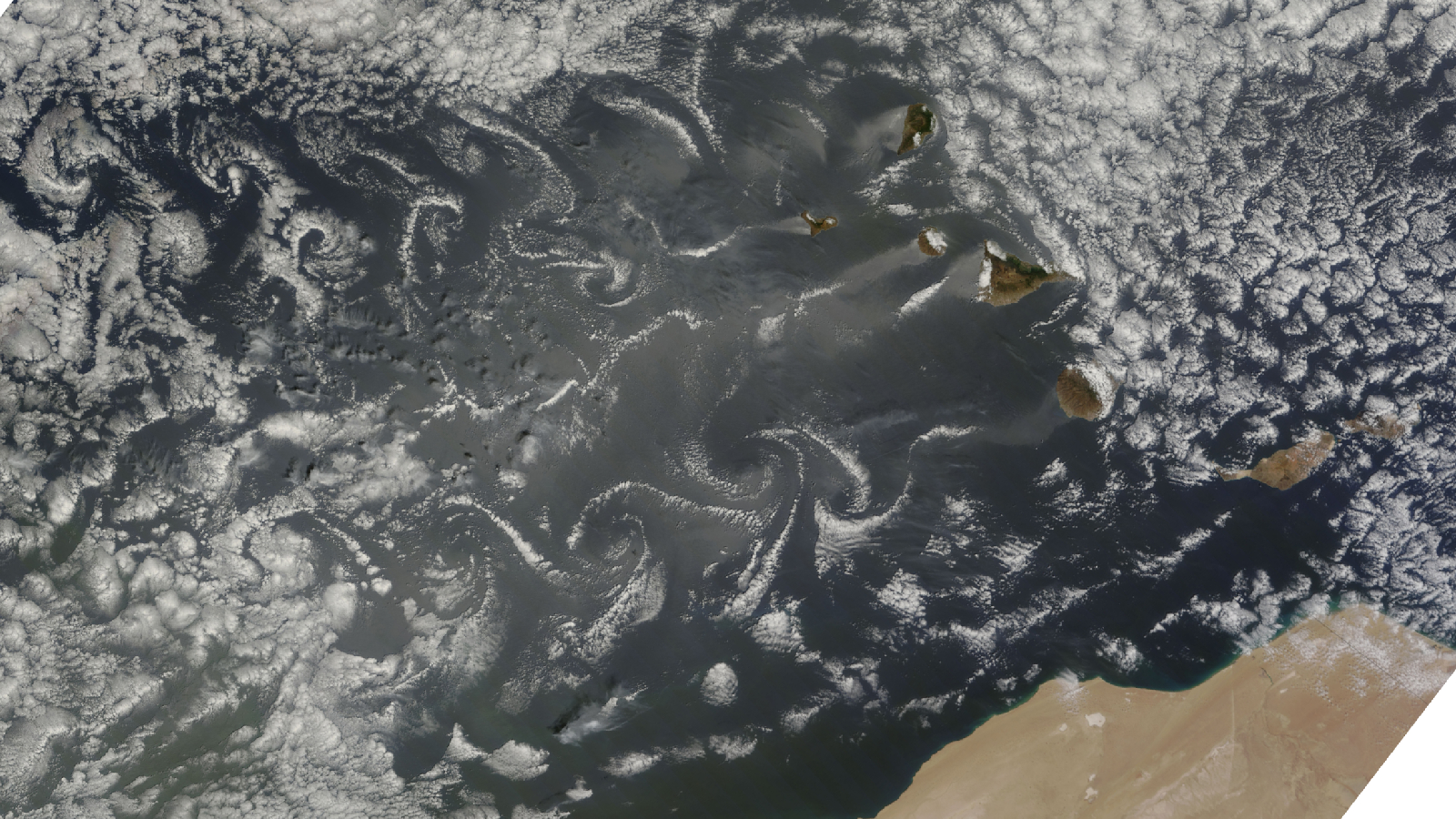Stunning cloud vortices swirl off 6 different Atlantic islands — Earth from space
A 2015 satellite photo captured a series of stunning "von Kármán vortices" swirling off Madeira and the Canary Islands. The giant swirls are collectively one of the best examples of this meteorological phenomenon ever seen.

Where is it? Atlantic Ocean
What's in the photo? Streams of von Kármán vortices flowing off multiple islands
Which satellite took the photo? NASA's Terra satellite
When was it taken? May 20, 2015
This striking satellite photo shows multiple examples of a rare meteorological phenomenon, known as "von Kármán vortices," swirling off at least six different islands in the Atlantic Ocean. Very rarely have so many of these swirling cloud trails been seen at once and over such a large area.
Von Kármán vortices occur when a prevailing wind encounters a landmass, disturbing the airflow and creating "a double row of vortices which alternate their direction of rotation," according to the National Oceanic and Atmospheric Administration (NOAA). These vortices then propagate downstream of the landmass and become visible when clouds get caught up in them.
In this photo, giant cloud swirls collectively cover an area of around 260,000 square miles (670,000 square km), making this one of the most widespread examples of concurrent vortices ever seen, according to NASA's Earth Observatory.
The most intricate swirls in the photo are seen in the vortices off Madeira, a Portuguese archipelago, at the top of the image (see below). Here, the high concentration of clouds reveals the detailed movements of the disturbed air in exceptional detail.
Related: See all the best images of Earth from space

Less-defined swirling trails are also seen trailing off the Spanish Canary Islands. From left to right, these are: La Palma, El Hierro, La Gomera, Tenerife and Gran Canaria. If you look closely (see below), you can see that the vortices from La Gomera and Tenerife interfere with each other, almost canceling them out completely.
Madeira and the Canary Islands are among the best places on Earth to see von Kármán vortices, according to the European Organisation for the Exploitation of Meteorological Satellites (EUMETSAT). This is because they have high peaks, high temperatures and are reasonably separated from their respective continents.
Get the world’s most fascinating discoveries delivered straight to your inbox.
These swirls are also commonly spotted coming from Guadalupe, a group of six French-owned islands in the Caribbean, on the opposite side of the Atlantic. On rare occasions, the swirls have also coincided with other phenomena, such as a warped "double rainbow."

While the vortices mostly occur in tropical climates, they can also be seen in the Arctic, such as on Svalbard's Bear Island, where they can sometimes appear alongside swirling algal blooms.
On average, a pair of von Kármán vortices is created somewhere on Earth every eight hours, according to EUMESTAT.

Harry is a U.K.-based senior staff writer at Live Science. He studied marine biology at the University of Exeter before training to become a journalist. He covers a wide range of topics including space exploration, planetary science, space weather, climate change, animal behavior and paleontology. His recent work on the solar maximum won "best space submission" at the 2024 Aerospace Media Awards and was shortlisted in the "top scoop" category at the NCTJ Awards for Excellence in 2023. He also writes Live Science's weekly Earth from space series.
You must confirm your public display name before commenting
Please logout and then login again, you will then be prompted to enter your display name.


